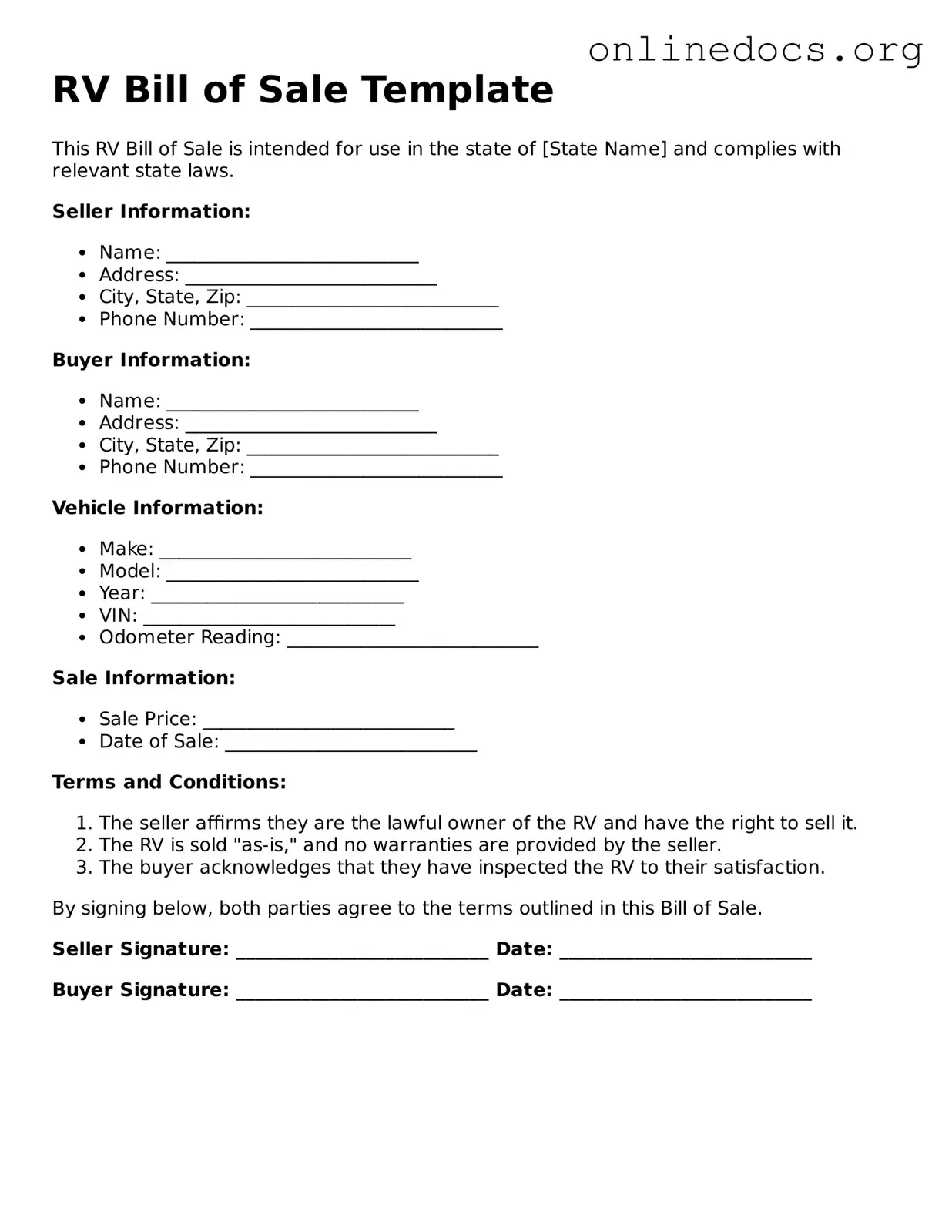The RV Bill of Sale form shares similarities with a Vehicle Bill of Sale. Both documents serve as proof of transfer of ownership for a vehicle. They include essential details such as the buyer's and seller's names, the vehicle identification number (VIN), and the purchase price. This ensures that both parties have a clear record of the transaction, which can be crucial for future reference or in case of disputes.
Another document that is comparable is the Boat Bill of Sale. Like the RV Bill of Sale, this form facilitates the transfer of ownership for a watercraft. It typically contains similar information, including the boat's hull identification number (HIN), details about the buyer and seller, and the sale price. Both documents serve to protect the interests of both parties involved in the transaction.
The Motorcycle Bill of Sale is also akin to the RV Bill of Sale. This document outlines the sale of a motorcycle and includes vital information such as the motorcycle's VIN, the names of the buyer and seller, and the agreed-upon price. Both forms help establish legal ownership and can be used for registration purposes with the appropriate state authorities.
A Car Title Transfer form is another document that resembles the RV Bill of Sale. While the title transfer focuses specifically on the legal ownership of the vehicle, it often accompanies a bill of sale in transactions. Both documents provide necessary details about the vehicle and the parties involved, ensuring a smooth transition of ownership.
The Lease Agreement for RVs is similar in that it outlines the terms of use for the recreational vehicle, though it does not transfer ownership. This document typically includes the duration of the lease, payment terms, and responsibilities of both the lessor and lessee. While the RV Bill of Sale finalizes a sale, the lease agreement establishes a temporary arrangement for use.
Additionally, the Warranty Deed is comparable in function to the RV Bill of Sale, though it pertains to real estate rather than vehicles. Both documents serve as proof of transfer of ownership. They include essential details about the parties involved and the property being transferred, ensuring clarity and legal validity in the transaction.
For a thorough understanding of ownership transfer, you can explore our comprehensive guide on how to fill out a Bill of Sale form effectively.
Finally, the Gift Bill of Sale is similar to the RV Bill of Sale in that it documents the transfer of ownership without monetary exchange. This form typically includes the names of the donor and recipient, as well as a description of the item being gifted. Both documents serve to formalize the transfer and protect the interests of both parties involved.
